A Long Weekend in Ljubljana - Where the Heck is That?
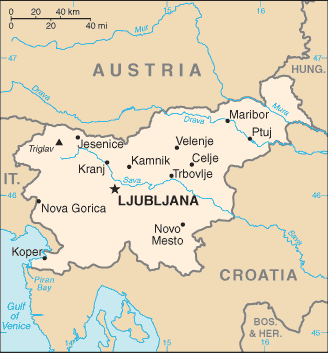
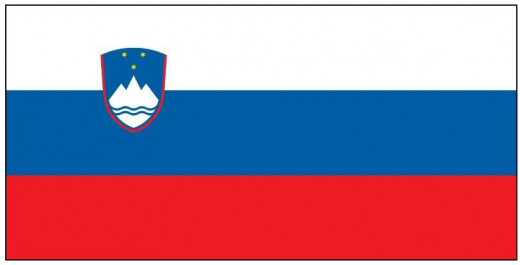
For people who like to travel and see and experience new places, there is real advantage to living in Europe. For several years, my wife and I lived just north of London in the United Kingdom. While the UK has many great attractions of its own, we took great advantage of the proximity to other European nations, visiting as many as we could before our return to the States in 2009. Often we would pick a place that looked interesting and fly there for a few days. As I was working on a US military base, I had access to the European Stars and Stripes, a newspaper serving the military community. Once a week they had a travel section highlighting a city or a region and, while browsing the paper back in 2008, I read an article on Ljubjlana (pronounced "lyoo-BLYAH-nah"), the capital of Slovenia. (I can imagine a blank stare on some faces when reading this - where the heck is that? Well, when Yugoslavia broke up some 20+ years ago, the small nations that made up that country became independent and Slovenia occupies the northwest corner.) A nation of just over 2 million people, it's an "undiscovered" gem.
"The Slovene lands were part of the Austro-Hungarian Empire until the latter's dissolution at the end of World War I. In 1918, the Slovenes joined the Serbs and Croats in forming a new multinational state, which was named Yugoslavia in 1929. After World War II, Slovenia became a republic of the renewed Yugoslavia, which though Communist, distanced itself from Moscow's rule. Dissatisfied with the exercise of power by the majority Serbs, the Slovenes succeeded in establishing their independence in 1991 after a short 10-day war. Historical ties to Western Europe, a strong economy, and a stable democracy have assisted in Slovenia's transformation to a modern state. Slovenia acceded to both NATO and the EU in the spring of 2004; it joined the eurozone in 2007. (CIA World Factbook)
The article in the Stars and Stripes described Ljubljana as a great place to visit, ignored by many travelers due to unfamiliarity, but with much to see and do, as well just a beautiful city to relax in. After perusing the pictures and doing a bit of research, we decided to take the plunge and I booked a flight. Great choice! Ljubljana turned out to be absolutely marvelous. It reminded me of a (much) smaller version of Paris (population just over 270,000) with delightful restaurants lining the banks of the Ljubljanica river. The people were friendly, the city was a great place to walk around in, the food was delicious, especially the pizza! Slovenia borders Italy, Austria, Hungary, and Croatia, so you have Mediterranean, Germanic, Magyar, and (of course) Slavic influences. (The location makes Ljubljana a great place to stay as you visit the countries of southern and central Europe. The prices aren't nearly as dear as, say, Rome, Paris or Vienna. Slovenia uses the Euro by the way.) My wife and I were walking around one evening and heard some music. We investigated and it turned out to an orchestra tuning up for an outdoor concert. We picked up a flyer and discovered it was to be held later in the evening. After a great dinner of typical Slovenian food (I had the venison - delicious!), we returned to the square where the concert was, and were treated to about 2 hours of great music, including several arias of Italian opera and other classical selections. And it was free! (I understand there are many outdoor concerts in the city when weather permits.)
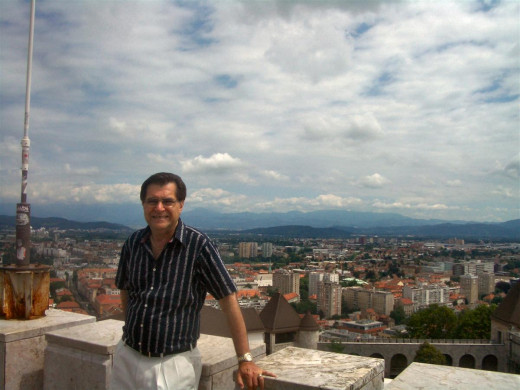
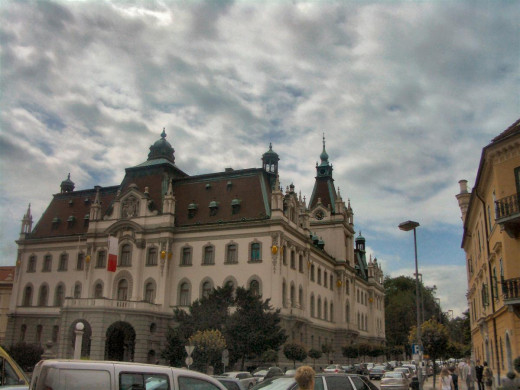
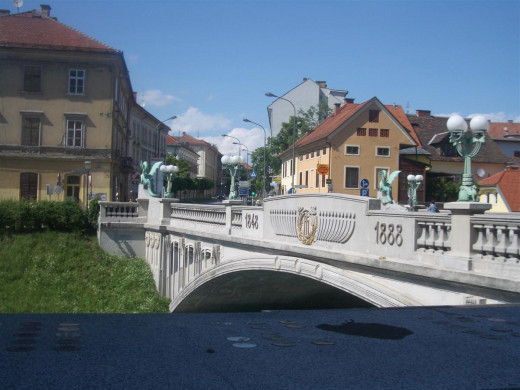
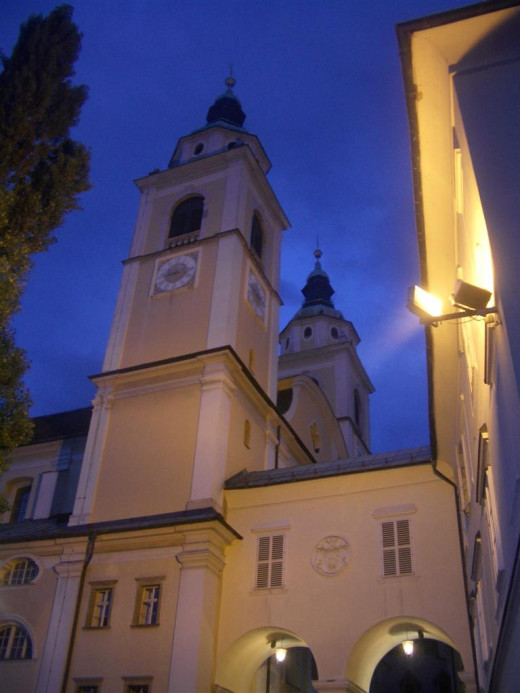
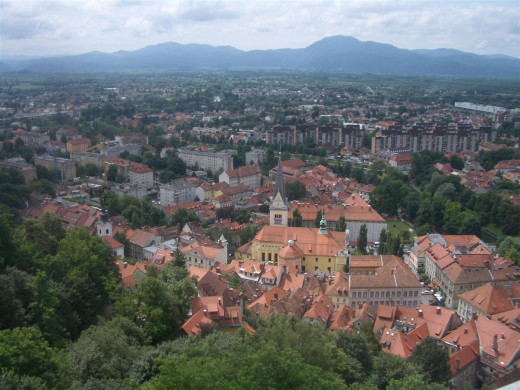
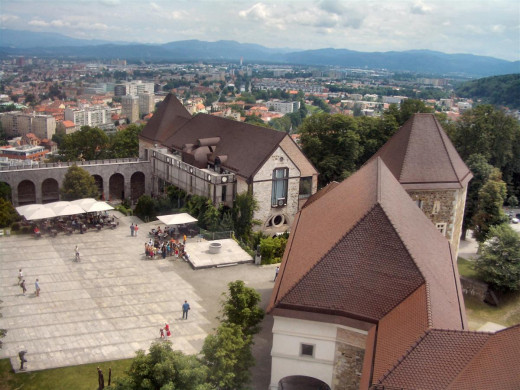
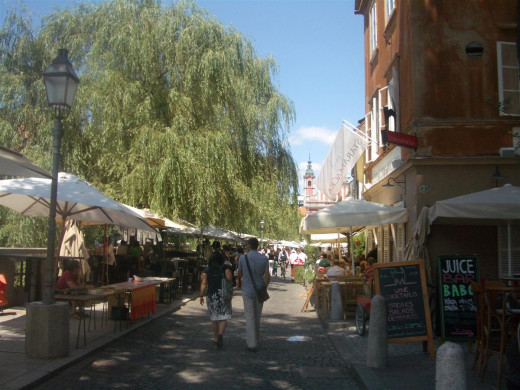
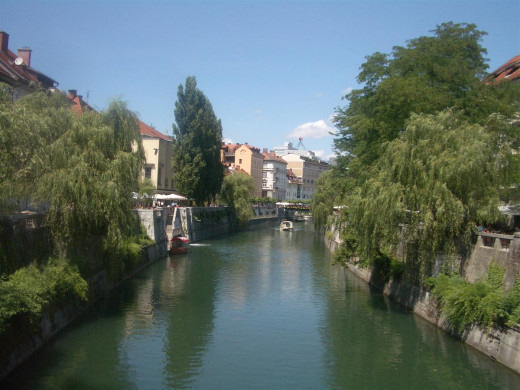
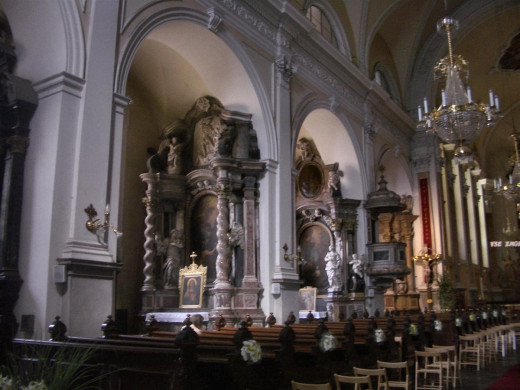
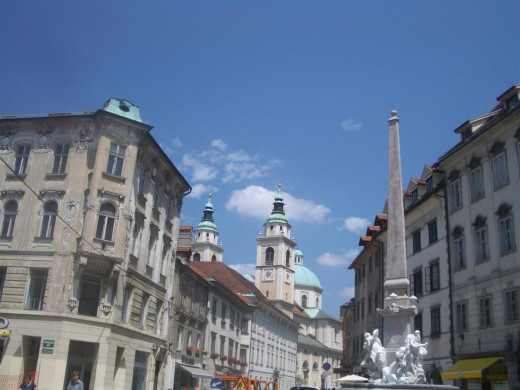
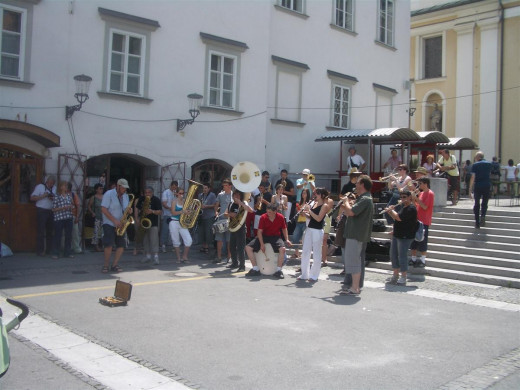
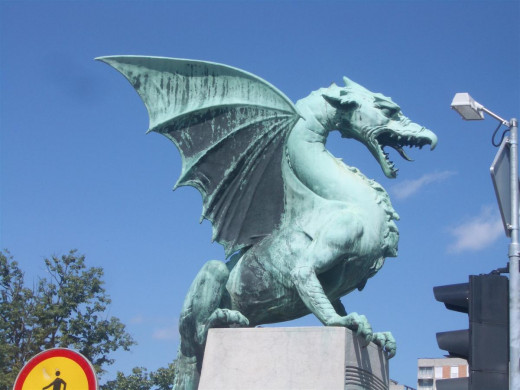
The wines of Slovenia are interesting but largely unknown to American wine connoisseurs. My wife and I are red wine lovers and wanting to try a "typical" Slovenian red wine, I took a chance and pointed to a wine listed in a menu in a restaurant recommended to us by the folks at the hotel (the place where I had the venison). It turned out to be Kraski Teran and it came in a black bottle shaped something like a fish. Now I'm suspicious of wines that come in "non-traditional" bottles, so I approached the glass rather gingerly. Then I had my first taste - fantastic! It is definitely a full-bodied wine, with a somewhat fruity after taste. My wife loved it too and it's all we drank while we were there -- it's excellent chilled as well as at room temperature. (I have not been able to find this wine anywhere on this side of the Atlantic, so if anyone has seen it for sale, please leave a comment below.) The wine is made from refosco grapes:
"The wine produced from this grape (sometimes also other refosco grapes) acquires the distinctive flavour and bouquet only when it is grown in the specific terra rossa ("Red Earth") soil typical of a very restricted area of Kras plateau: within Slovenia and Italy, but is also widely grown on similar red soil in Western Istria. In all other cases, Teran is simply a misnomer for refosco wine. It is a rich, slightly sour, full-bodied red wine with a high lactic acid content. It is very palatable, and highly prized by connoisseurs of fine wines. It is also very rich in iron, and in the past it was prescribed as a therapy for anemia." (Wikipedia) I don't know about its curative powers, but it sure tastes good!
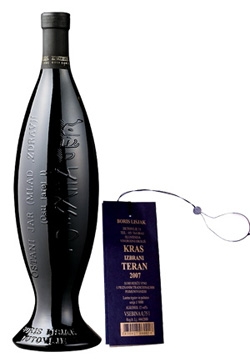
We did not visit the rest of Slovenia as we only had a few days but I understand the rest of the country is beautiful, especially the area around Lake Bled, in the northwest corner of the country. The weather, at least when we went in the summer, was beautiful. Being in lower central Europe, the country experiences all four seasons:
" The weather in Slovenia varies from season to season. There are also three climatic influences that meet in the country. A harsh Alpine climate prevails in the mountains, the coast has a sub-Mediterranean climate, and the north-east lowlands have a continental climate. The average temperature is above 20°C in July, and around 0°C in January." (www.slovenian.info website) Twenty degrees Celsius, by the way, translates to sixty degrees Fahrenheit and 0 degrees Celsius is 32 Fahrenheit.
If you're looking someplace different to go, try Ljubjlana - I guarantee you won't be disappointed.








